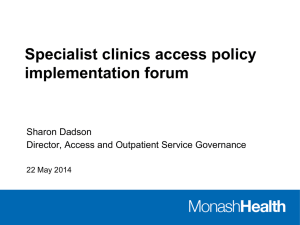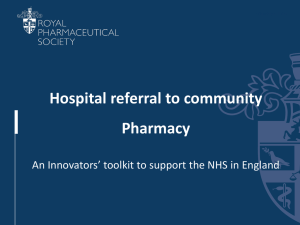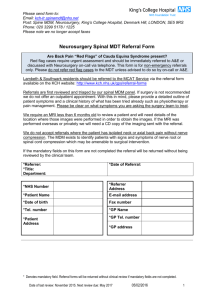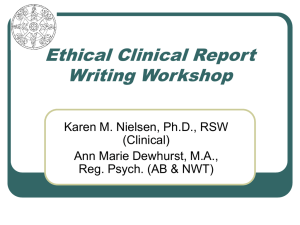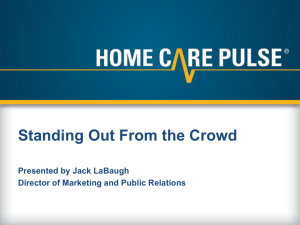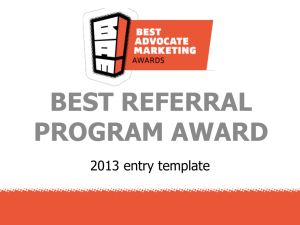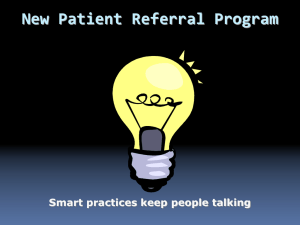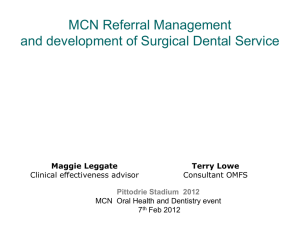Shiran Isaacksz - e
advertisement
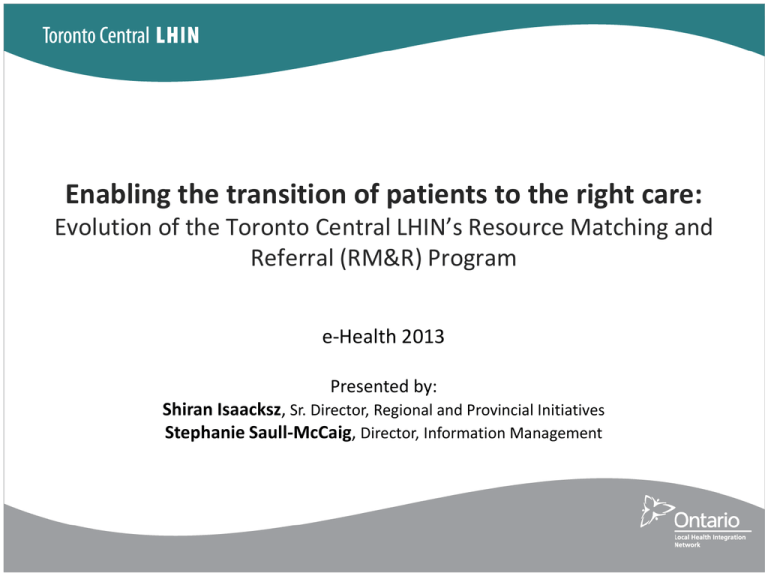
Enabling the transition of patients to the right care: Evolution of the Toronto Central LHIN’s Resource Matching and Referral (RM&R) Program e-Health 2013 Presented by: Shiran Isaacksz, Sr. Director, Regional and Provincial Initiatives Stephanie Saull-McCaig, Director, Information Management CFPC CoI Templates: Slide 1 Faculty/Presenter Disclosure • Nothing to Disclose Patient – Sally This is Sally Home Care Profile Age: 75 Medical History: Long Term Care Community Support Rehab Acute • Type 2 Diabetes • Mild dementia • Recent hip replacement • Required Rehab Services, CCAC In-Home services and Community Support Patient – Healthcare Landscape Sally represents the 1% of the population which account for 34% of healthcare expenditures. population healthcare expenditures Patient Challenges Sally and her care team are finding the navigation through the Care Continuum difficult due to the inefficient referral processes. The Problem Patient and Provider Challenges • • Inefficient paper referral processes, which require faxing referral applications between provider organizations, create unnecessary delays due to: • Incomplete information • Illegible writing • Inappropriate matching of patients to programs/services Unnecessary delays can contribute to alternate level of care length of stay. The Solution Resource Matching & Referral (RM&R) A patient-centred approach to managing referrals across sectors • • WEB • RM&R matches patients to appropriate programs/services based on assessed clinical needs, reducing the number of inappropriate referrals. RM&R enhances communication and collaboration between providers, and increases referral process efficiency by creating documentation and service referrals electronically. RM&R improves health system reporting and planning by providing a single source of LHIN-wide referral data. RM&R Achievements 28,727 activeService registered users 84 Health Providers • 6 Acute Hospitals 8 Rehab/CCC Hospitals Toronto Central CCAC 34 Community Support Services Agencies 37 Long Term Care (LTC) homes (including 3 Convalescent) 59,239 logins on average per month • • • • 5,897 LTC beds Benefits Challenges • • • • Further Refinement to Referral Forms and Processes Alignment with Other Provincial Systems/Priorities Ability to Support Growth/Expansion Streamlined Reporting Enablers Strategic Priorities Vision Driving Principles Enabling the timely transition of patients to the right care Simplify the Referral Process Make the System Smarter Governance Business Engagement Technology Drive System Change through Information Vision for RM&R INTELLIGENT REFERRALS ‘ONE’ REFERRAL FOUNDATION SETTING • Enhancing Referral Processes • Improving Matching • Business Intelligence Tool • Leveraging Information from Source Systems • Smart Triage (matching upfront) • Link to Other Data Sets • User-Driven Adoption • Real-time Auto-generated Referral • Predictive Analytics Evolution of RM&R Integrated RM&R Analogous to the evolution of Consumer Electronics Standalone RM&R Pre-RM&R Provincial Initiatives Provider Portal Access Intelligence Access Data HIAL HealthClinical Information Access Layer DataPortal Repository Provider Links applications, engines Shared central repository that storesto Browser-based toolintegration to allow access and data repositories to form an documents and data discrete data elements ConnectingGTA online integrated from health care organizations (e.g., Single pointsystem of access for clinicians Provides a setregistries). of communication and repositories, across continuum of care integration services to communicate and Ability for clinicians collaborate with one another Information • • • • CDR Data Convergence Towards a Common Technical Platform Provider Portal Access HIAL Information CDR Data The Road Ahead….. Better Transition of Care Thanks! Any questions, please contact us at Shiran.Isaacksz@uhn.ca or Stephanie.Saull-McCaig@uhn.ca




